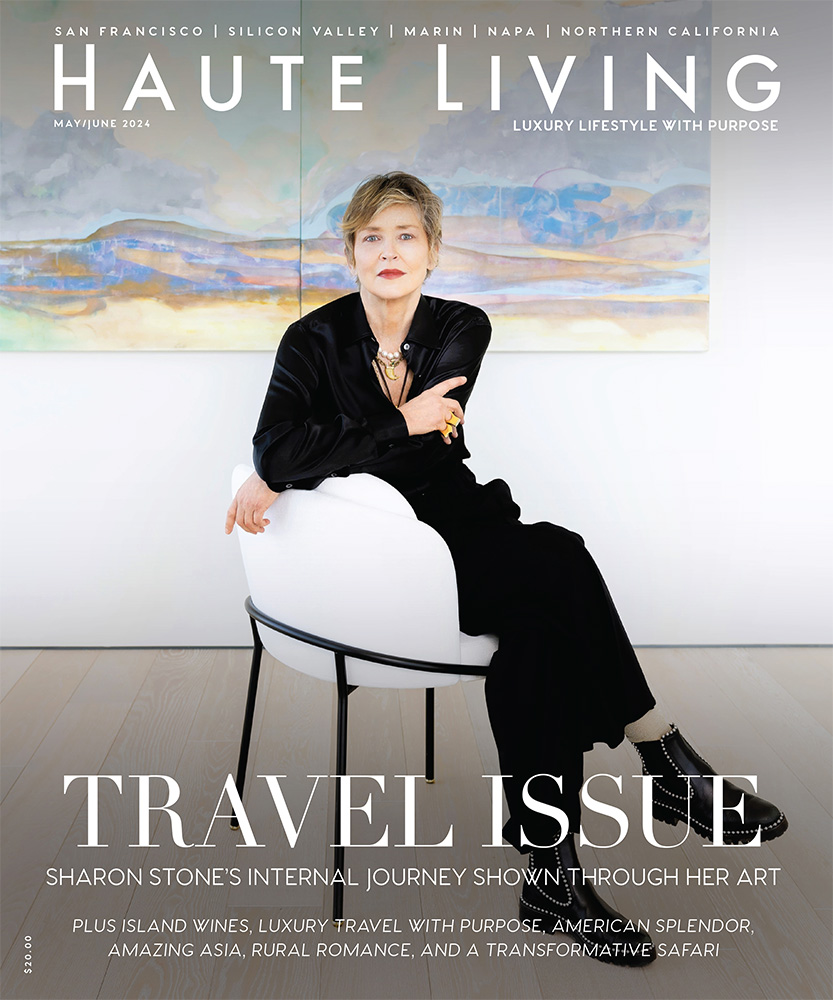The accomplished artist shares the intimate story behind her art exhibition, “My Eternal Failure.”
Photos by MOANALANI JEFFREY
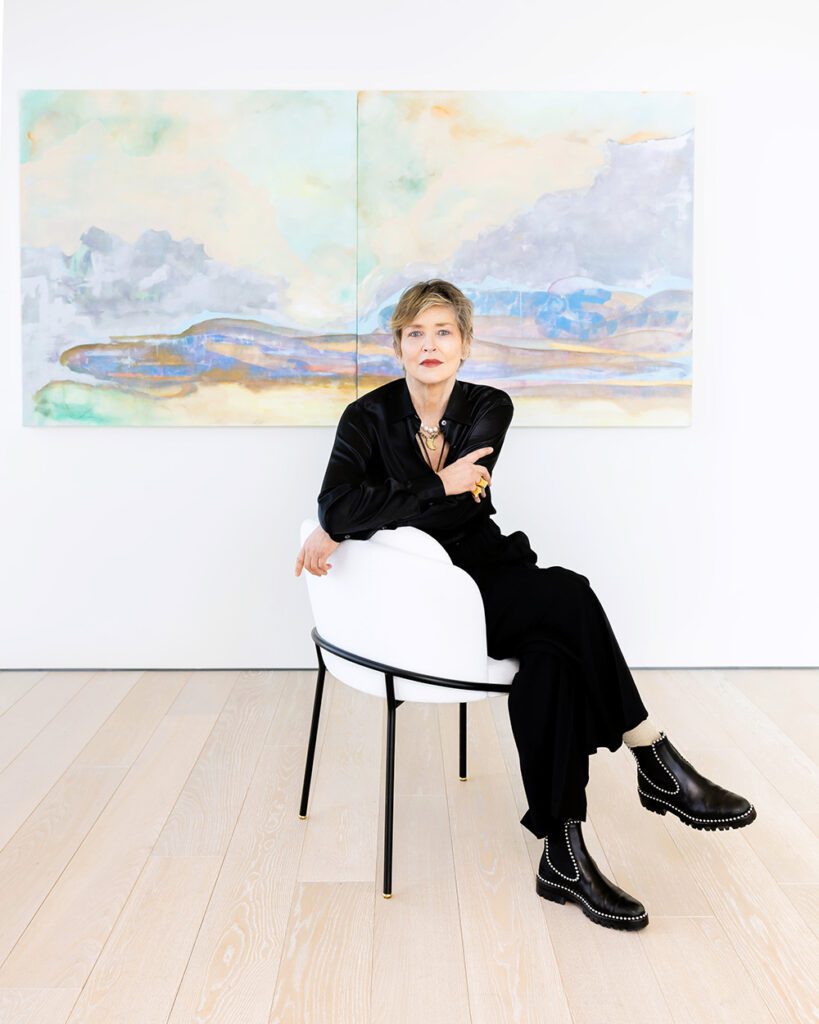
When Sharon Stone announces she is a failure, your basic instinct is to protest. Here is a 66-year-old, ravishingly beautiful, and accomplished painter and actress with worldwide recognition, multiple gallery shows, an Emmy, a Golden Globe, an Academy Award nomination, and a star on the Hollywood Walk of Fame. But her most recent foray into the arts, a powerfully moving exhibit of paintings at Gallery 181 in San Francisco, is titled, “My Eternal Failure.” The title refers to the late 1990s, a period in San Francisco when she experienced the breakdown of her marriage, a protracted custody battle over her toddler son, and a brain hemorrhage that left her clinging to life for nine days in the ICU. “A lot of it was painted because I wanted to work out all these feelings and thoughts … like get it all out,” she explains. “And you have to not bite into that seed of bitterness, like, ‘Oh, me and my stroke. Me and my bad relationship.’ And then this is where you get to this happy place. But it’s a journey.”
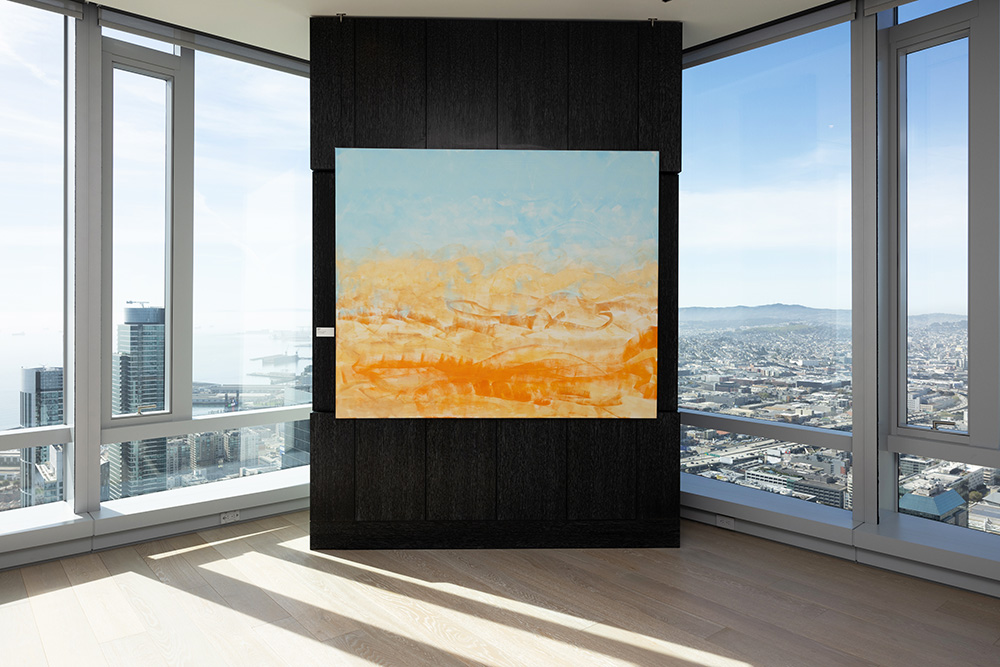
The exhibition is hung between the sweeping Bay views from the gallery’s 56th floor, high above SOMA. It showcases Stone’s complex and chastening experiences from a 6-year span at the height of her Hollywood career. In 1998, Stone married Phil Bronstein, then executive editor of the San Francisco Examiner and later the San Francisco Chronicle, and relocated to the city. Together they purchased a house in Sea Cliff and, in 2000, adopted their son, Roan. In 2001, a life-threatening, ruptured brain artery left her impaired and in severe pain, arresting her film career and upending her already stressful home life. “Phil was never there,” she says. “He never had his phone. I don’t know where the hell he went. Our marriage was a desert.” By 2003, divorce and custody proceedings were underway, sending Stone into a tailspin of confusion and circumstance.
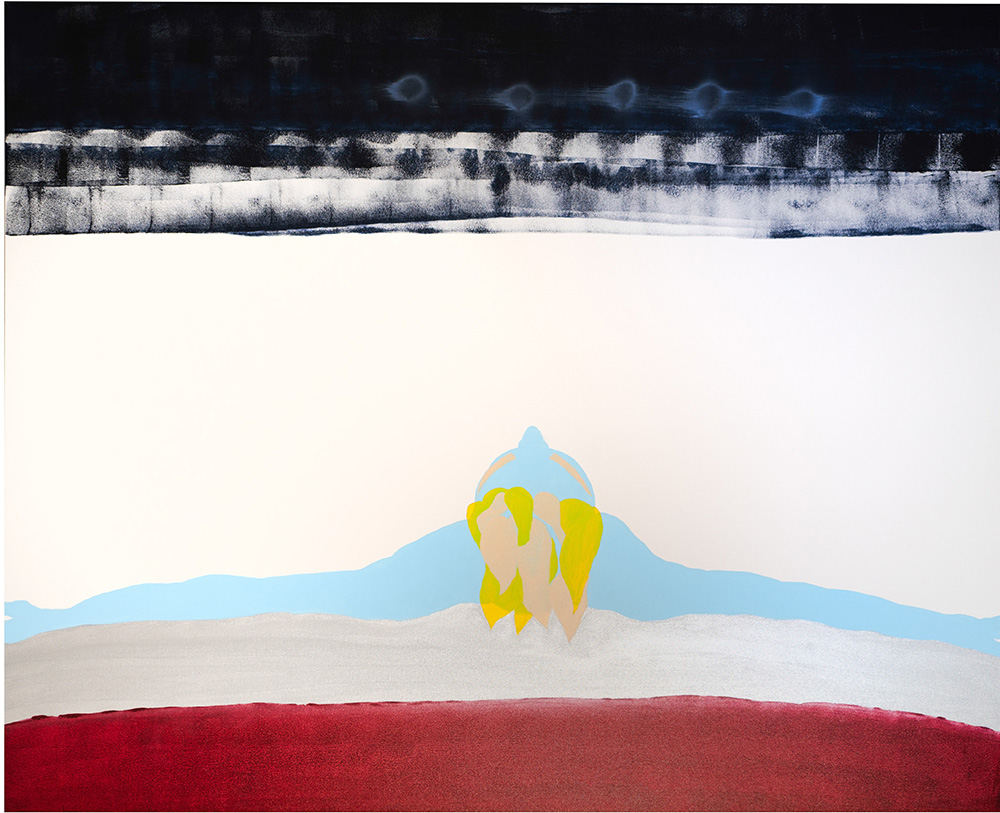
Although her brain injury came with significant challenges to her body and mind, it also amplified her creative abilities, enabling her to sense color in an entirely different way: a phenomenon called synesthesia. She returned to painting to process and reinterpret this painful time. As an academically gifted child who won a college scholarship at 15, Stone had studied art, architecture, and design at Edinboro University of Pennsylvania but left to pursue modeling and acting. She returned to complete her degree in 2016.
While most of the titles directly refer to her SF sojourn, most canvases in the show were painted over the past few years. “Once I got the San Francisco show, I was like, ‘Okay, we’re going to look at my eternal failure. San Francisco was where everything fell apart for me.’ And then I was able to finish this painting that I’d been working on for three years.” Stone points to the large canvas that titled the entire show. “I’d been putting it away and pulling it back out, throwing it out in the garden and letting it get rained on. Then, finally, it all came together.”
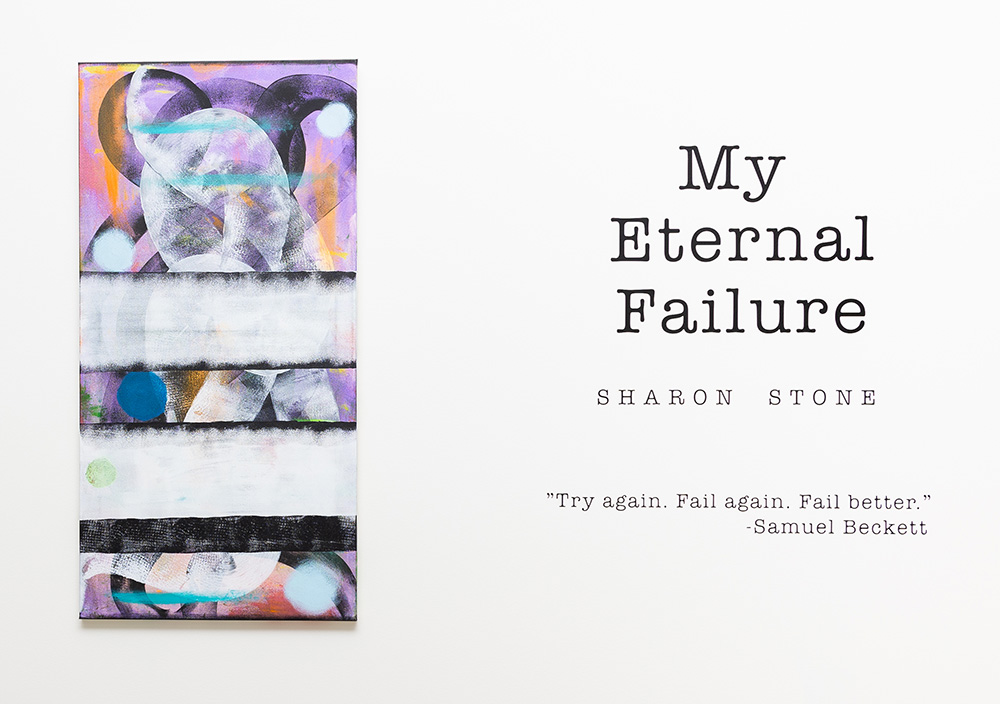
She points to another canvas, “The Party,” a dark background writhing with serpent shapes. “They’re snake skins. There’s only one actual snake. Everybody changes. And snakes are the only animal that let go of their skins and change and change and change.” Stone recalls an aggressive gallerist telling her that she should replicate these motifs multiple times, as they were very marketable. “I got approached by people who create commercialism for artists. And they wanted me to do nothing but this. They were like, ‘We can do a whole show of just your snake paintings, and we can make prints and t-shirts and sweatshirts and really do it.’ And I just thought, ‘Nope.’ I’m not just a painter of snakes, I’m a painter of my feelings and thoughts … like so.” She gestures to a mysterious canvas across the room, titled “Hoisted On My Own Petard.”
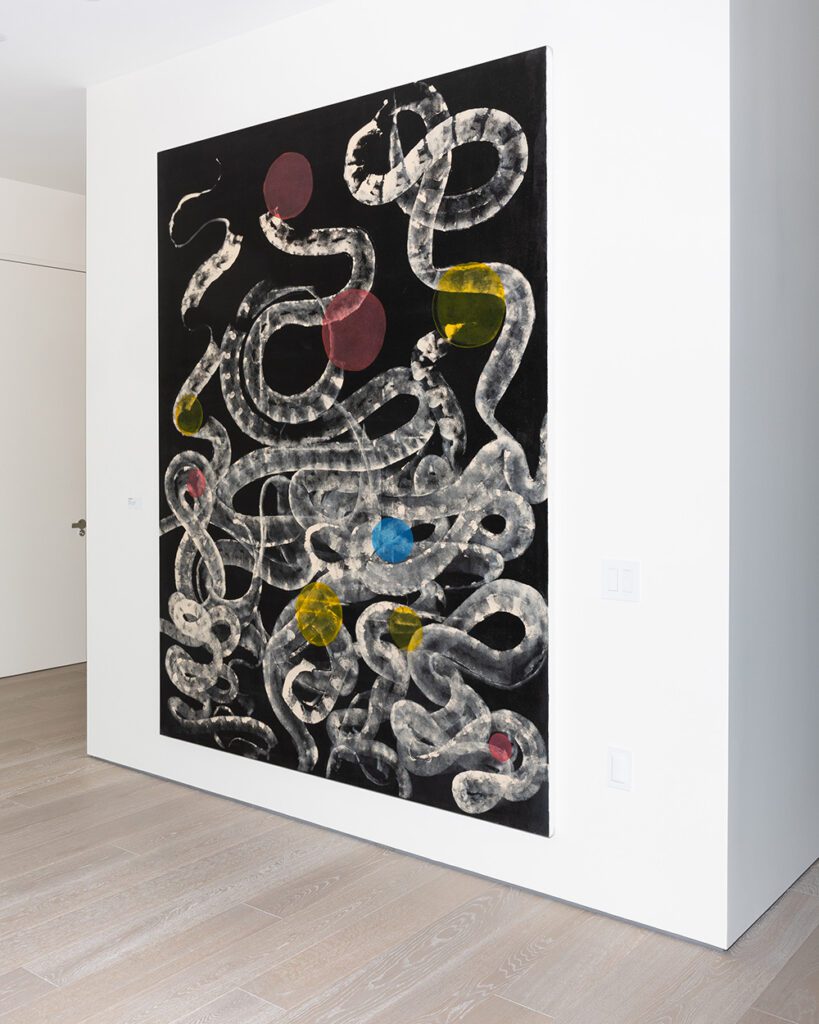
Her creative inspiration involves lucid dreaming. “Sometimes I dream them before I paint them, or I get an idea and pull out a canvas and start working. The canvas has a kind of vibration and tells me what it wants to do.” She leads us to the work depicting rocks and spikes. “I was so clear what I was going to do before I started. This brown I love so much. This is about how your life starts and people tell you, ‘Okay, this is what you are doing. You have this big pile of rocks, and I expect you to do this, this, and this. You’re going to put them over here, and that’s going to be your life. And then you think, ‘Whose fucking life am I living? I’ve got to go make my own goddamn life.’” She adds, “When I was dead on the table, I thought, perhaps the life you gave me is killing me. I just did this because that’s what everybody said a woman had to do.” She points to another canvas, titled “Be Like Water.” “This was something I had to learn. If you want to survive the craggy road, you have to be like water.”
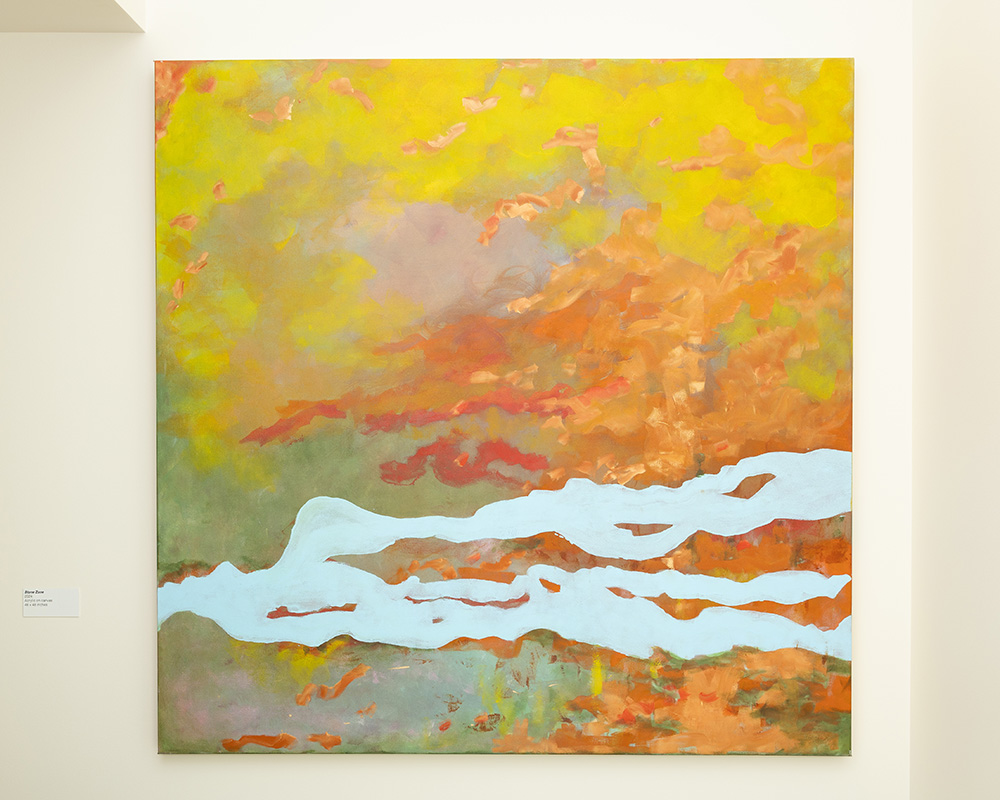
She ushers us into a room and gestures toward “The Bridge,” which refers to her brain hemorrhage. What at first looks like a mountain becomes a view of the top of a head with outstretched arms extended toward both edges of the canvas. Below the body is a swath of deep blood red. Hovering across the top is a graphite grey field punctuated by five luminous orbs. “I kept hearing Simon and Garfunkel’s ‘Bridge Over Troubled Water’ when I was in the MRI machine and after. And this is me. And these are the people I saw when I died.” She points to the hovering orbs. “They were all around me, saying it was okay. I didn’t know what to do and I was so afraid, but you become like a temple, and then all this happens … and then you come back.”
When questioned about why she has chosen to reveal such personal backstories for her art, Stone demurs. “You know how Van Gogh went to a mental hospital, and then he painted his best paintings because he felt safe to hear the voices from the divine? And we still hear it every time we look at his paintings.”
The conversation shifts to Stone’s painting practice. “I have a studio next door to my home. And I have a really good studio manager whom I feel so safe with because he leaves me alone. He handles the business side. I work on multiple pieces. I might leave this in the studio; I might put this in storage. That one I left outside. I have literally sprayed paintings with the hose, mopped them with a Swiffer®. Sometimes, you just have to beat them up.” She sighs. “It’s like they are beings, you know? You have to talk to them. You have to romance them. You have to yell at them. It just depends.” She takes a deep breath. “The more I get engaged in this process, the more I understand that all things just have different densities.
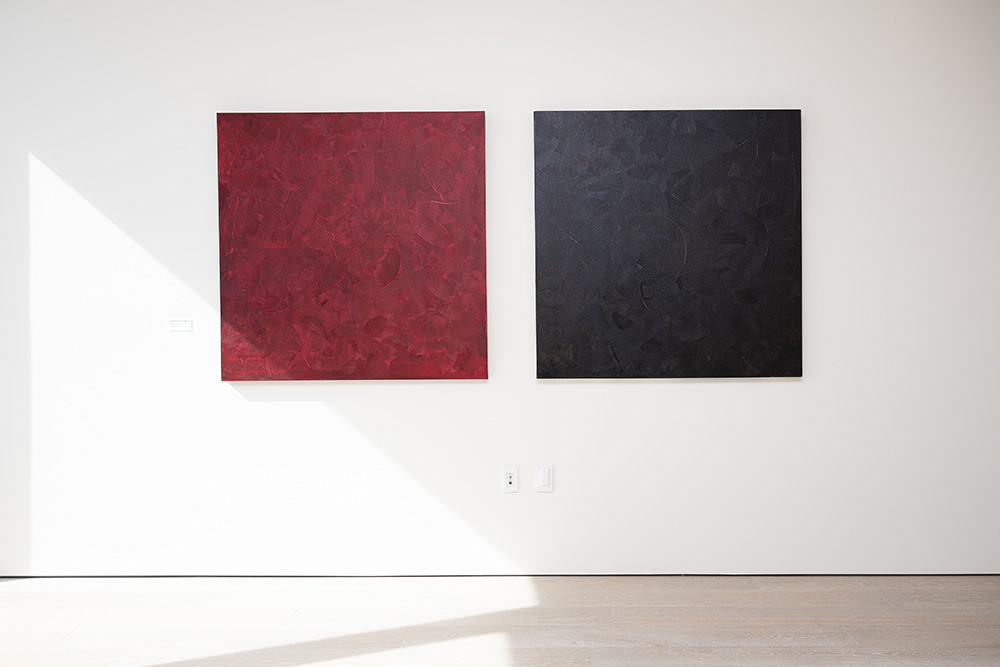
Nothing is solid. If there are degrees of density and everything is a wavelength, then … everything sounds like color. If steam turns into water, then water can turn into steam, right?” Stone becomes even more animated. “Once you understand that, you can do whatever you want. You can make whatever you want. You can change the direction of things that you could stop being afraid about, especially phony people doing phony things, because they’re not really changing anything.” She takes another deep breath.
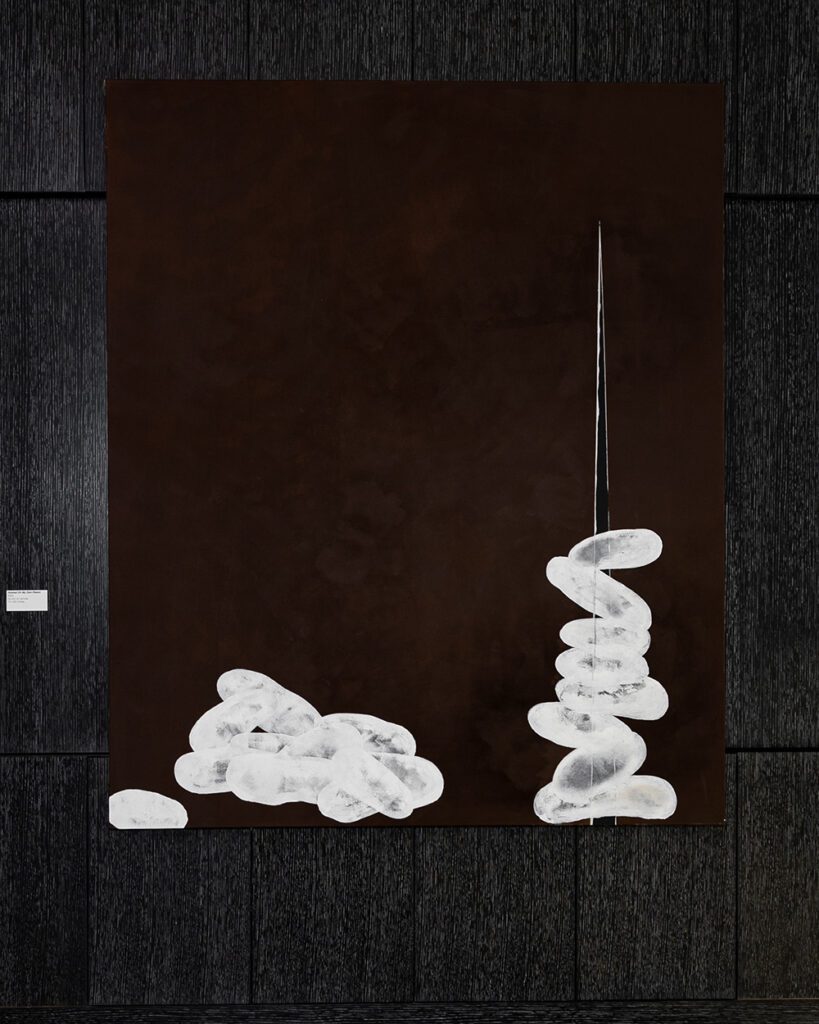
In light of her depiction of “failure,” we ask Stone about her definition of success. “It’s the exact same thing. I just had to accept that my greatest failure—all the terrible things that happened to me here—was the greatest thing that ever happened. The most horrible person I ever met, who did the most horrible things to me that you could ever imagine, was my greatest teacher, the greatest illuminator possible. Lucky me.” She takes a deep breath then adds, “I picked the typeface for my show on purpose: Click Clack. But it took me a long time to turn back into steam.”
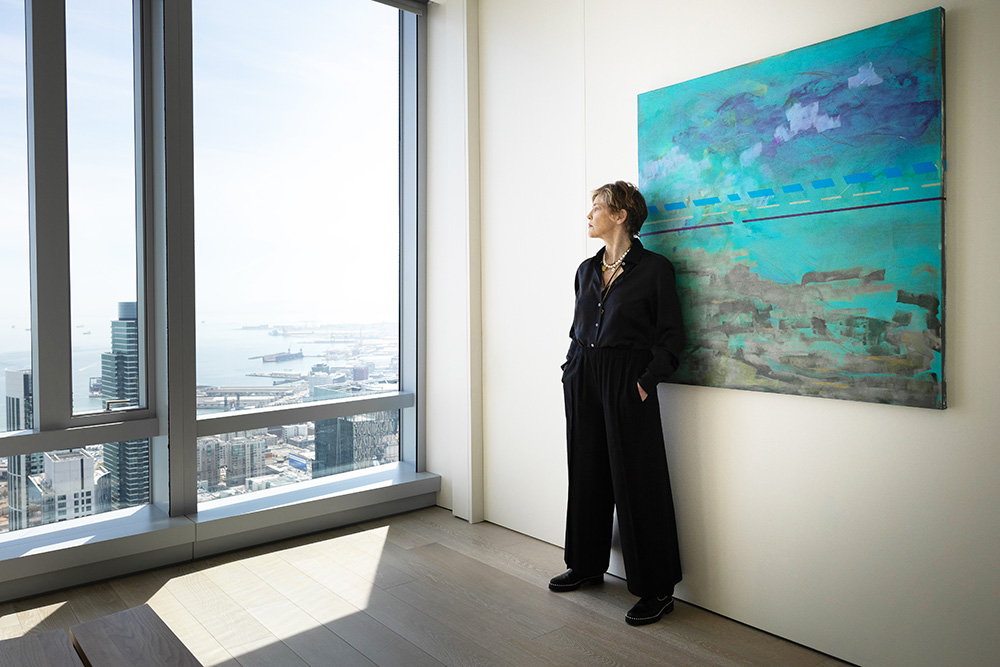
The face that launched so many films gives a knowing look, hovering 56 floors above the earth with the same concentrated gaze that has hovered so memorably on screen. “Life is never really like the fairy tales. It’s different, you know, beautiful but different.” A smile emerges as she spreads her arms to include the San Francisco light pouring over the paintings that transport her back to this place and time. “So, this is kind of where I have traveled.”
The exclusive collection of paintings by Sharon Stone is available to view and purchase by private appointment. The showing runs through August 31, 2024. Contact Carmen Legarda at Gallery 181, Carmen@181fremont.com.

